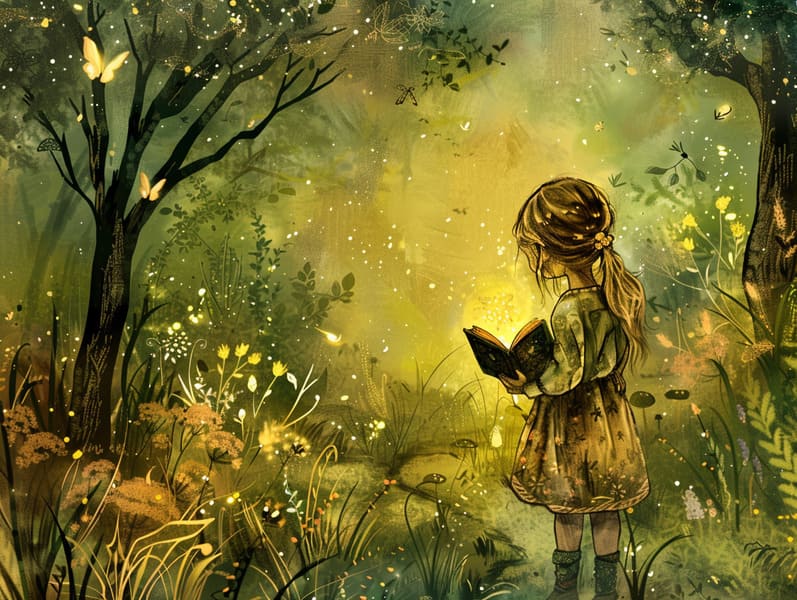The Beginning of Old Fairy Tales and Their Unfading Beauty.
The Beginning of Old Fairy Tales and Their Unfading Beauty.
Blog Article

Traditional fairy tales have deep roots. These tales have been recounted from one generation to the next well before they were ever written down. They developed from a variety of backgrounds, including Indigenous traditions. They were initially disseminated among mature audiences, often carrying themes and messages mirroring the societal norms and beliefs of the time.
The renowned Brothers Grimm, Jacob and Wilhelm Grimm, were among the first to compile and publish many of these beloved narratives. Their compilation, "Grimm's Fables," included narratives like "The Little Glass Slipper," "Hansel and Gretel," and "Snow White," which have since become pillars in the world of timeless fairy tales. Similarly, H. C. Andersen's imaginative stories, such as "The Mermaid," and "The Duckling's Story," have touched hearts worldwide, solidifying their place in the pantheon of treasured fairy tales.
Despite their ancient origins, these stories remain as important as ever, especially as kids' bedtime tales. These magical stories are now available in many formats, including richly illustrated books, delightful animations, and online storybooks.
Their persistent charm can be linked to several delightful features:
Life Lessons: Ancient fairy tales often whisper important moral lessons. Tales like "The Boy Who Cried Wolf" teach the virtue of truthfulness, while "The Hare and the Tortoise" underline the values of steadfastness and humbleness. These tales offer young readers clear distinctions between truth and falsehood, building their moral compass in a subtle yet impactful way.
Empathy and Understanding: Old fairy tales frequently portray heroines facing difficulties and adversities, urging audiences to relate with their struggles and celebrate their triumphs. For instance, "The Tale of Beauty and the Beast" shows us the necessity of looking deeper to comprehend the real character of a person, advancing sympathy and insight.
Cultural Perception: Many fairy tales are saturated in the cultural contexts from which they arose. Immersing in these fairy tales can provide enlightening views into different backgrounds, building a sense of global appreciation and awareness.
Creativity and Fantasy: The whimsical elements in traditional fairy tales—mythical entities—inspire children’s imaginations. These narratives lead readers to enchanted realms, fostering innovative thinking and a sense of enchantment that endures a lifetime.
Old fairy tales are not only charming but also teaching. They act as mesmerizing tools in advancing various cognitive and emotional skills in the young. When fairy tales are spoken out loud, they develop communication skills by bringing new vocabulary and elaborate sentence structures. This practice also cultivates listening abilities and focus, as little ones listen intently, keen to see what happens next.
Furthermore, discussing the themes and characters of fairy tales can nurture problem-solving abilities and cognitive skills. Young ones are educated to see patterns, foresee events, and grasp cause and effect. These contemplations also support little ones say their thoughts and feelings, cultivating their emotional intelligence.
In today’s electronic age, the proliferation of online fairy tales has made these tales more reachable than ever. Web platforms and digital apps present comprehensive collections of bedtime fairy tales that can be experienced or heard anytime, anywhere. Fairy tales voiced are particularly common, making available an delightful method for children to engage with these bewitching tales. Spoken stories and read-aloud videos guide characters and settings to life, often complemented by bewitching music and melodies that boost the tale experience.
The lasting appeal of ancient fairy tales lies in their ability to modify to contemporary times while keeping hold of their fundamental ideas. Contemporary reimaginings of these stories often include more representative characters and modern settings, making them relatable to today’s audience. However, the underlying themes of boldness, sympathy, and fair-mindedness remain unchanged, continuing to influence readers of all ages.
Fairy tales also offer a sense of security and comprehensibility. They distribute a coherent narrative with a definite beginning, middle, and end, often ending with the solving of conflicts and the triumph of right over wrong. This certainty can be placating for young ones, furnishing a sense of steadiness in an constantly changing world.
Classic fairy tales continue to captivate and enlighten new generations, maintaining their allure and applicability in modern society. As bedtime stories for kids, they disclose a perfect blend of charm and enlightenment, fostering moral values, empathy, and creativity. The existence of online storybooks and the well-received status of fairy tales voiced promise that these timeless stories remain within reach to new generations.
By safeguarding and sharing these stories, we continue to pay tribute to the rich tapestry of tradition and cultural heritage. Whether you are seeing a read more vividly illustrated book, enjoying a electronic library, or playing an read-aloud book, the radiance of ancient fairy tales is always within reach. These stories illustrate of the everlasting essence of storytelling and its ability to bind us across eras and regions.
No matter if you are viewing a gorgeously illustrated book, enjoying a online library, or listening to an read-aloud story, the grace of children's fairy tales is always within reach.
These stories show us of the invariable strength of narratives and its ability to bond us across centuries and lands, forming a connection that enchants and educates alike.